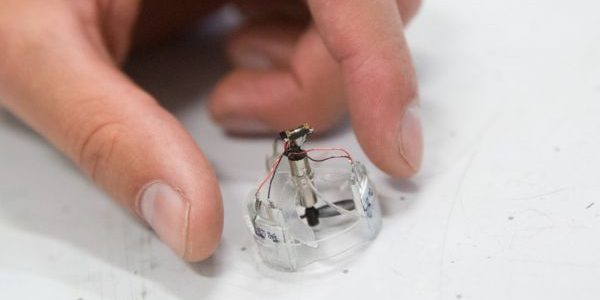A little robot from the University of Pennsylvania is proving that sometimes bigger isn’t better.
The Piccolissimo is the world’s smallest self-powered controllable drone. It comes in two sizes, a quarter-sized one weighing less than 2.5 grams and a larger, steerable one that’s heavier by 2 grams and wider by a centimeter (.39 inches). Size-wise, it is actually a bit larger than Harvard’s RoboBee, but the latter is hooked to an external power source and consequently has more limited motion.
Piccolissimo is made possible by UPenn’s ModLab, which specializes in “underactuated” robots that can achieve great ranges of motion with the fewest motors possible. The tiny tech only has two parts: the propeller and the body. The motor spins the body 40 times per second in one direction, while the propeller spins 800 times per second the opposite way. The drone can be steered because the propeller is mounted slightly off-center. Changing the propeller speed at precise points during the drone’s flight changes its direction.
“One of the interesting things about the design is that much of the complexity is in the design of the body which is 3D printed,” researcher Mark Yim told Digital Trends. “Since the cost of 3D-printed parts are based on the volume of plastic in the part, and independent of complexity, the flyer is very low-cost.”



















